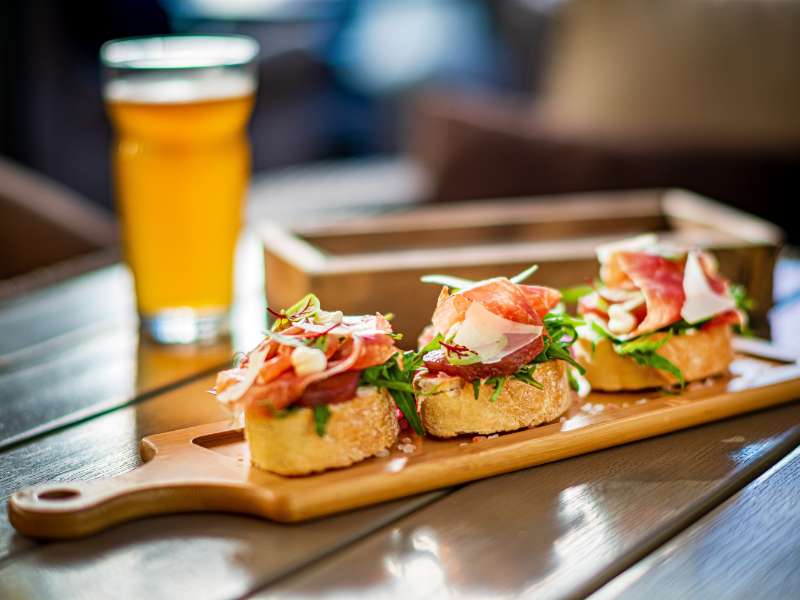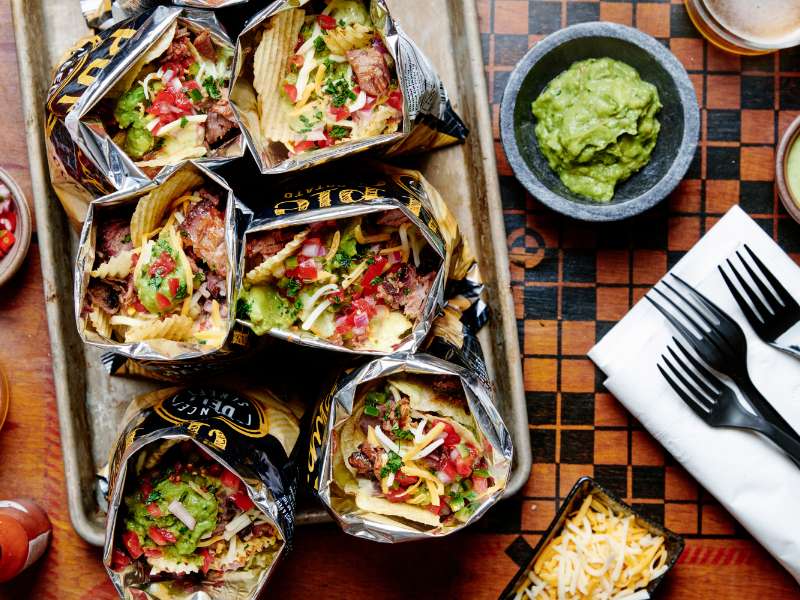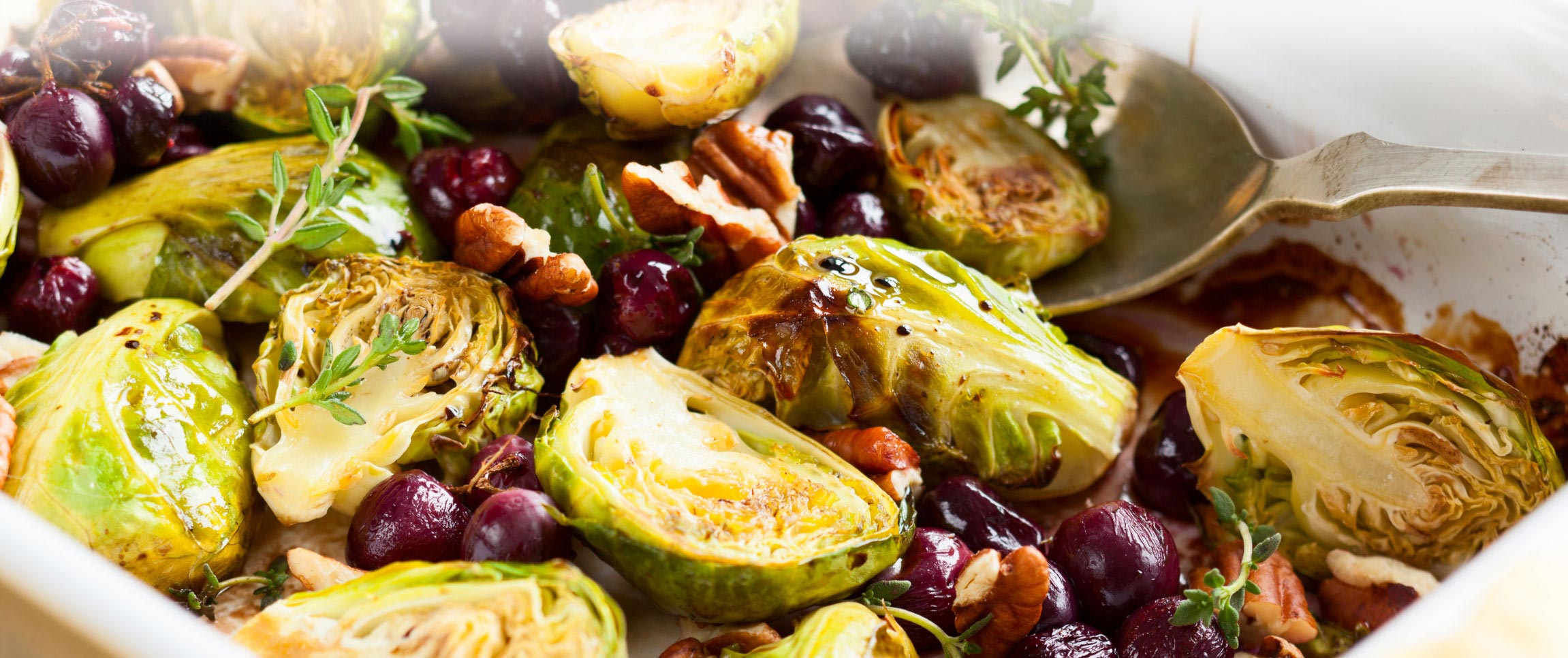Superfoods. Some claim these ingredients have extraordinary, restorative powers—able to detoxify while providing the body with all manner of vitamin and mineral is substantive doses. Others say, meh, they’re good but not magical. Regardless of which theory you ascribe to, there’s no denying some of these so-called superfoods are hot menu items, especially among those who are more diet conscious.
One of those is the historically maligned Brussels sprout, stepping out from the shadows of bad childhood memories to superstar veg. Low in calories, while high in fiber and bursting with vitamins B & C, plus a little of that Omega 3 fatty acid, Brussels sprouts are the go-to vegetable for those trying to avoid sugar-heavy peas or starchy potatoes.The trick, of course, is how to serve up these little miniature cabbage heads and how to cook them consistently. The second part is easy. While whole sprouts make for a pretty presentation, cutting them in half or into quarters will allow you to cook them all the way through without overcooking the delicate outer leaves. The first part? Well, that depends on what you want your sprout to be served.
They could be transformed into a salad. Slice your sprouts extra thin, toss with crispy bits of Ridgecrest bacon and dress with vinaigrette—since Brussels sprouts are fall produce, an apple cider vinaigrette pairs well—walnuts and slices of Parmesan wouldn’t hurt either. A Dijon vinaigrette could be another option. Try adding dried fruits, like cranberries chopped dates, perhaps a crumble of Roma Gorgonzola to add just the right amount of pungency—a good thing in moderation. These salads can also do double duty as a sandwich topping, adding crunch and flavor to a grilled or fried chicken breast.
 Soups are another choice. A simple cream of Brussels sprouts works, but why not veer toward the more exotic? Thinly shaved sprouts simmered in coconut milk with fragrant curry, then sprinkled with toasted mustard seeds and freshly chopped cilantro is sure to be both exciting and comfortably homey. Hearty stews with stewed Roma tomatoes and andouille sausage are another option, especially when flavored with freshly ground fennel seeds. Instead of using potato, try cubed parsnips to really keep within the fall theme.
Soups are another choice. A simple cream of Brussels sprouts works, but why not veer toward the more exotic? Thinly shaved sprouts simmered in coconut milk with fragrant curry, then sprinkled with toasted mustard seeds and freshly chopped cilantro is sure to be both exciting and comfortably homey. Hearty stews with stewed Roma tomatoes and andouille sausage are another option, especially when flavored with freshly ground fennel seeds. Instead of using potato, try cubed parsnips to really keep within the fall theme.If your menu has an à la carte side list, Brussels sprouts should be a permanent addition. Prepared ahead of time or à la minute, Brussels sprouts roasted with bacon bits and drizzled with Piancone premium balsamic vinegar are quickly becoming a classically popular dish. For a little added brightness, sprinkle them with a little sel de mer just before serving—just make sure the bacon hasn’t already added enough salt.
Seasonal fall plates are also perfect when finished with a few sprouts. Braised meats, like short ribs or mutton, are also prime choices for some perfectly roasted sprouts as they can be easily prepared to complement or counter the rich flavors from the slowly cooked meats. Who could resist Irish whiskey-braised short ribs with pan roasted Brussels sprouts tossed in Guinness brown butter (literally Guinness beer and butter slowly reduced)?
They can even be an entree. Toss those sprouts in schmaltz (rendered chicken fat) with Roma pine nuts or thin-sliced almonds, add a couple of crushed cloves of garlic, then roast. Top off with gribenes (crispy chicken skins) for an incredibly rich and indulgent dish. Sprouts can also work as a main component of a pasta dish, adding flavor and color. They’re a perfect addition to traditional carbonara or a fettuccine.
Brussels sprouts have come a long way from the overcooked tiny cabbages of the past. While extremely versatile and trendy, fresh Brussels sprouts have traditionally been a fall/winter crop limiting their use on the menu. Now, thanks to cultivation along California’s Central Coast, with fog-cooled temperatures, you can get fresh sprouts year round to keep this superfood available for your health conscious diners.



